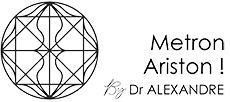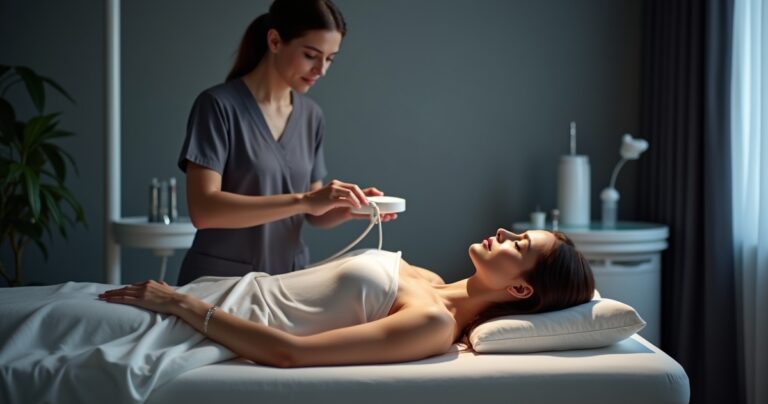Stretch Marks on Breasts: Causes, Treatment, & Prevention
Stretch marks on breasts are a common concern for many individuals, often appearing as streaks or lines on the skin. These marks can vary in color from red or purple to white or silver, depending on their age and the individual’s skin tone. While they are not harmful, they can be a source of cosmetic concern for some.
What are stretch marks on breasts?
Stretch marks, also known as striae, are a form of scarring on the skin. They occur when the skin is stretched rapidly, causing the collagen and elastin fibers to tear. This results in the characteristic streaks that can appear on various parts of the body, including the breasts.
- Stretch marks are a type of scar.
- They occur due to rapid skin stretching.
- Commonly appear as streaks or lines.
How common are breast stretch marks?
Breast stretch marks are quite common, especially during periods of rapid growth or hormonal changes. According to a study published in the National Center for Biotechnology Information, a significant percentage of individuals experience stretch marks at some point in their lives.
- Common during puberty and pregnancy.
- Affects both men and women.
- Prevalence increases with rapid weight changes.
Causes of Stretch Marks on Breasts
Hormonal changes during puberty
During puberty, the body undergoes significant hormonal changes that can lead to rapid growth. This growth can cause the skin to stretch quickly, resulting in stretch marks on the breasts.
- Hormones trigger rapid growth.
- Skin may not keep up with body changes.
- Common in teenagers.
Pregnancy and breastfeeding
Pregnancy is another time when hormonal changes and weight gain can lead to stretch marks. The breasts often enlarge to prepare for breastfeeding, which can cause the skin to stretch.
- Breasts enlarge during pregnancy.
- Hormonal changes affect skin elasticity.
- Common postpartum concern.
Rapid weight gain or loss
Significant changes in weight, whether gain or loss, can lead to the development of stretch marks. The skin may not have enough time to adjust to the new body size, resulting in tears in the dermis.
- Skin struggles to adapt to rapid changes.
- Can occur with weight gain or loss.
- Affects skin elasticity.
Genetic factors
Genetics play a crucial role in determining who is more likely to develop stretch marks. If your parents had stretch marks, you might be more predisposed to them as well.
- Genetic predisposition affects likelihood.
- Family history is a strong indicator.
- Varies from person to person.
Underlying medical conditions
Certain medical conditions, such as Cushing’s syndrome, can increase the likelihood of developing stretch marks. These conditions often involve hormonal imbalances that affect skin elasticity.
- Hormonal imbalances can cause stretch marks.
- Medical conditions may exacerbate skin issues.
- Important to consult a healthcare provider.
Appearance and Symptoms of Breast Stretch Marks
Color and texture changes
Stretch marks can start as red or purple lines and gradually fade to white or silver. The texture of the skin may also change, feeling slightly raised or indented.
- Initial color is red or purple.
- Fades to white or silver over time.
- Texture may feel different.
Location on the breasts
Stretch marks can appear anywhere on the breasts but are most commonly found on the upper and outer areas. They may also extend to the surrounding skin.
- Common on upper and outer breast areas.
- Can extend to nearby skin.
- Varies with individual body shape.
Progression over time
Over time, stretch marks may become less noticeable as they fade in color. However, they rarely disappear completely without treatment.
- Fade over time but remain visible.
- Treatment can speed up fading.
- Rarely disappear entirely.
Treatment Options for Breast Stretch Marks
Topical treatments
Retinoids
Retinoids are derived from vitamin A and can help improve the appearance of stretch marks by promoting collagen production.
- Derived from vitamin A.
- Promotes collagen production.
- Can improve skin texture.
Hyaluronic acid
Hyaluronic acid is known for its hydrating properties and can help improve skin elasticity, making stretch marks less noticeable.
- Hydrates and plumps skin.
- Improves elasticity.
- Reduces visibility of stretch marks.
Vitamin E
Vitamin E is an antioxidant that can help repair skin damage and improve the appearance of stretch marks.
- Antioxidant properties.
- Repairs skin damage.
- Enhances skin appearance.
Laser therapy
Laser therapy can be an effective treatment for reducing the appearance of stretch marks. It works by stimulating collagen production and improving skin texture.
- Stimulates collagen production.
- Improves skin texture.
- Reduces visibility of stretch marks.
Microneedling
Microneedling involves using tiny needles to create micro-injuries in the skin, which stimulates collagen production and can improve the appearance of stretch marks.
- Creates micro-injuries to stimulate healing.
- Boosts collagen production.
- Enhances skin texture.
Chemical peels
Chemical peels involve applying a chemical solution to the skin, which exfoliates the top layers and can improve the appearance of stretch marks.
- Exfoliates top skin layers.
- Improves skin texture.
- Reduces stretch mark visibility.
Prevention Strategies for Breast Stretch Marks
Maintaining a stable weight
Keeping a stable weight can help prevent the rapid skin stretching that leads to stretch marks. Regular exercise and a balanced diet are key.
- Prevents rapid skin stretching.
- Regular exercise is beneficial.
- Balanced diet supports skin health.
Proper hydration and nutrition
Staying hydrated and eating a nutrient-rich diet can improve skin elasticity and reduce the risk of stretch marks.
- Hydration improves skin elasticity.
- Nutrient-rich diet supports skin health.
- Reduces risk of stretch marks.
Supportive bras during pregnancy and exercise
Wearing supportive bras can help minimize breast movement and skin stretching during pregnancy and exercise.
- Minimizes breast movement.
- Reduces skin stretching.
- Important during pregnancy and exercise.
Regular moisturizing
Moisturizing the skin regularly can help maintain its elasticity and reduce the likelihood of developing stretch marks.
- Maintains skin elasticity.
- Reduces stretch mark risk.
- Regular application is key.
Natural Remedies for Breast Stretch Marks
Aloe vera
Aloe vera is known for its soothing and healing properties, making it a popular natural remedy for stretch marks.
- Soothes and heals skin.
- Popular natural remedy.
- Can be applied directly to skin.
Coconut oil
Coconut oil is rich in fatty acids and can help moisturize the skin, improving its elasticity and reducing the appearance of stretch marks.
- Rich in fatty acids.
- Moisturizes and improves elasticity.
- Reduces stretch mark appearance.
Cocoa butter
Cocoa butter is a popular ingredient in many skincare products due to its moisturizing properties, which can help improve skin texture.
- Moisturizes and softens skin.
- Popular in skincare products.
- Improves skin texture.
When to Consult a Healthcare Provider
Unusual changes in breast appearance
If you notice any unusual changes in the appearance of your breasts, it’s important to consult a healthcare provider to rule out any underlying conditions.
- Important to rule out underlying conditions.
- Consult if changes are unusual.
- Early consultation is beneficial.
Persistent discomfort or pain
If stretch marks are accompanied by persistent discomfort or pain, it’s advisable to seek medical advice to ensure there are no other health issues.
- Persistent pain should be evaluated.
- Medical advice is recommended.
- Ensures no underlying issues.
Emotional Impact of Breast Stretch Marks
Body image concerns
Stretch marks can affect body image and self-esteem, especially if they are prominent or cause discomfort.
- Can impact self-esteem.
- Prominent marks may cause concern.
- Support and understanding are important.
Myths and Facts About Breast Stretch Marks
Common misconceptions
There are many myths surrounding stretch marks, such as the belief that they can be completely removed with creams alone.
- Creams alone cannot remove stretch marks.
- Myths often lead to misinformation.
- Understanding facts is important.
Scientific evidence
Scientific studies have shown that while treatments can improve the appearance of stretch marks, they rarely disappear completely.
- Treatments improve appearance.
- Rarely disappear completely.
- Scientific evidence supports this.
Final Thoughts
Stretch marks on breasts are a common occurrence and can be managed with various treatments and preventive measures. Understanding the causes and available options can help individuals make informed decisions about their skin health.
FAQs
Why do I have stretch marks on my boobs?
Stretch marks on the breasts can occur due to rapid skin stretching from growth, weight changes, or hormonal fluctuations. They are common during puberty and pregnancy. Genetics and certain medical conditions can also play a role.
Are stretch marks on breasts a sign of breast cancer?
Stretch marks are not a sign of breast cancer. They are caused by skin stretching and are unrelated to cancerous changes. However, any unusual changes in breast appearance should be evaluated by a healthcare provider.
Can breastfeeding cause stretch marks?
Breastfeeding itself does not cause stretch marks, but the changes in breast size during pregnancy and lactation can contribute to their development. Proper support and skincare can help minimize their appearance.
Do stretch marks on breasts itch?
Stretch marks can sometimes cause itching as the skin stretches and heals. Moisturizing the skin can help alleviate this discomfort. Persistent itching should be discussed with a healthcare provider.
Can breast stretch marks be removed completely?
While treatments can improve the appearance of stretch marks, they rarely disappear completely. Options like laser therapy and topical treatments can help reduce their visibility.
How long do stretch marks on breasts take to fade?
Stretch marks can take several months to fade, with their color changing from red or purple to white or silver. Treatments can help speed up this process, but patience is key.
Can men get stretch marks on their chests?
Yes, men can develop stretch marks on their chests, especially during periods of rapid growth or weight changes. Hormonal factors and genetics also play a role.
Do breast implants cause stretch marks?
Breast implants can cause stretch marks if the skin is stretched too quickly. Choosing the right implant size and following post-operative care instructions can help minimize this risk.
Are stretch marks on breasts normal?
Yes, stretch marks on breasts are normal and common, especially during puberty, pregnancy, and weight changes. They are a natural response to skin stretching.
How to remove stretch marks from breast at home?
Home remedies like moisturizing with coconut oil or cocoa butter can help improve the appearance of stretch marks. Consistent application and patience are important for best results.








